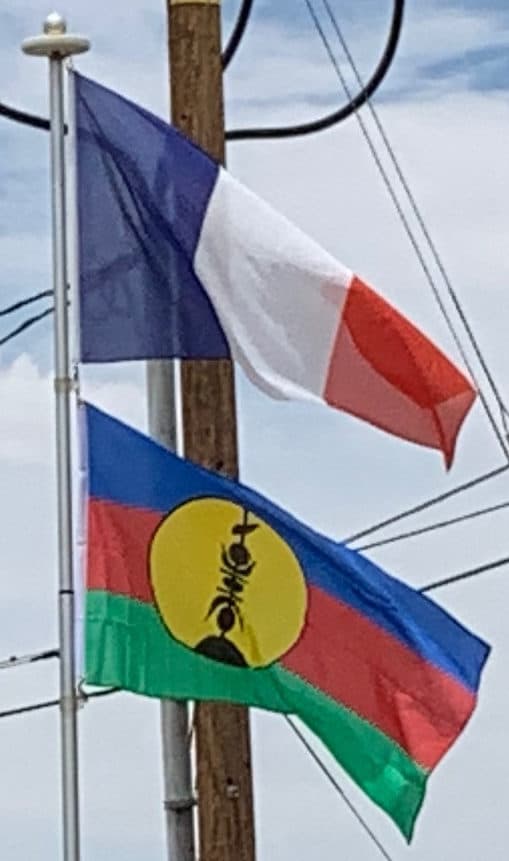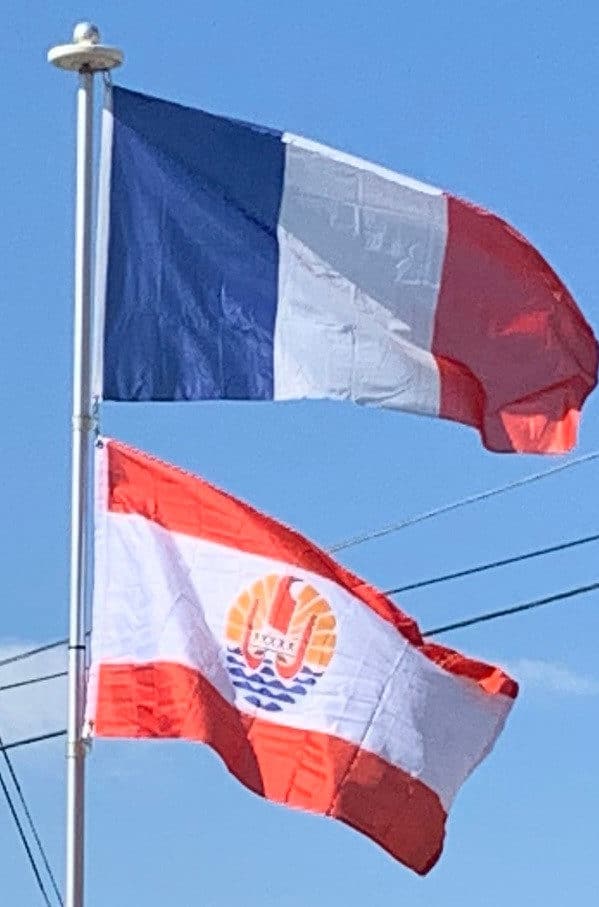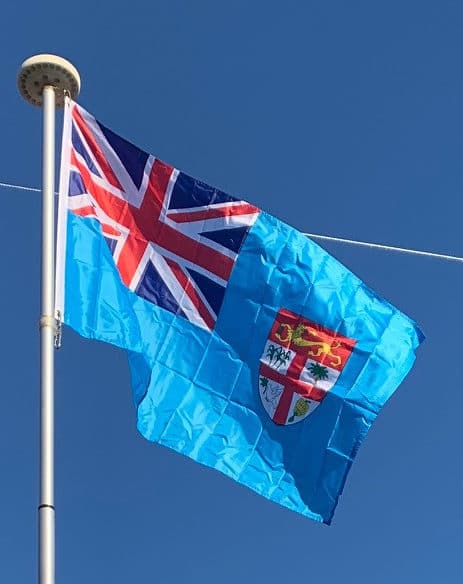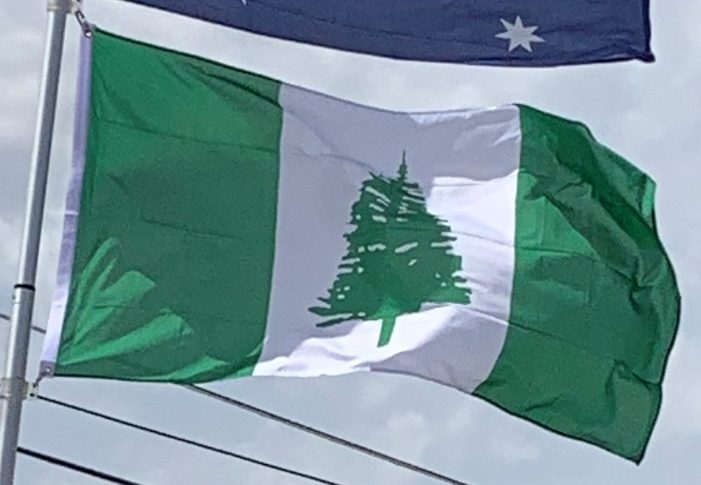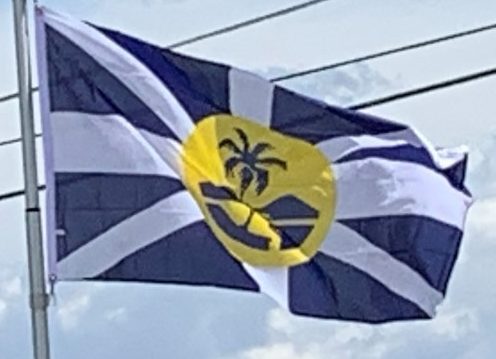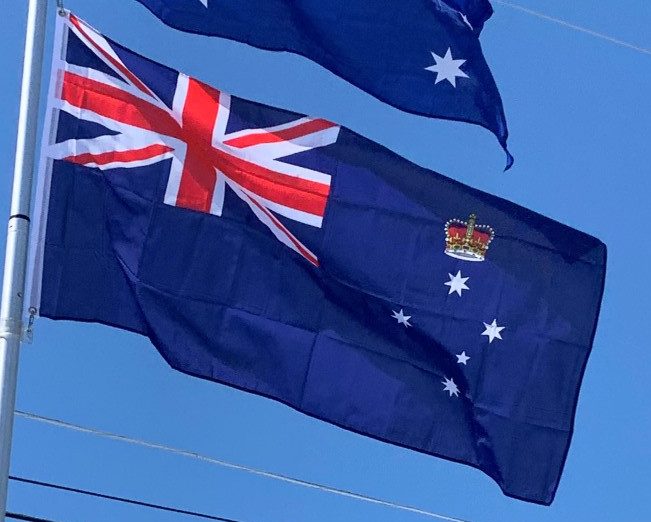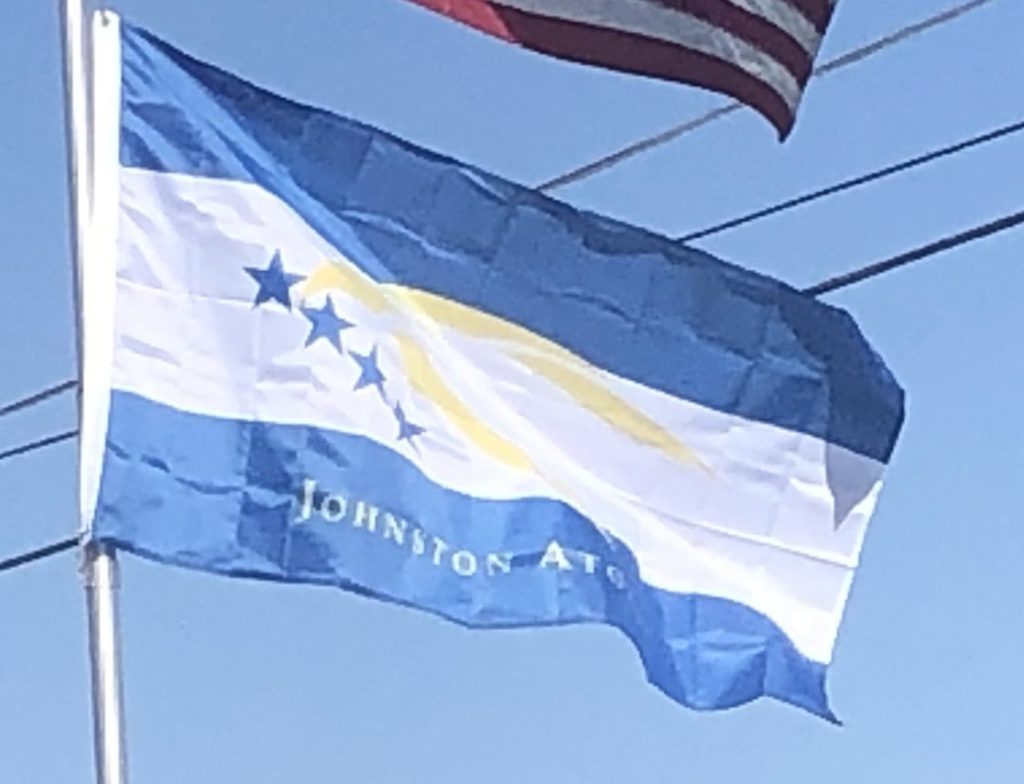The flag of Victoria, symbolising the state of Victoria in Australia, is a British Blue Ensign defaced by the state badge of Victoria in the fly. The badge is the Southern Cross topped by an imperial crown, which is currently the St Edward’s Crown. The stars of the Southern Cross are white and range from five to eight points with each star having one point pointing to the top of the flag. The flag dates from 1870, with minor variations, the last of which was in 1953. It is the only Australian state flag not to feature the state badge on a round disk.
The first flag of Victoria was adopted in 1870 .and was first flown from HMVS Nelson on 9 February 1870. It too was a defaced British Blue Ensign with the Southern Cross located in the fly. The stars of the Southern Cross were white and had 5, 6, 7, 8 and 9 points with only the leftmost and rightmost stars having one point pointing to the top of the flag. The adoption of the flag came about when Victoria became the first Australian colony to acquire a warship, and thus under the British Colonial Naval Defence Act of 1865 Victoria needed a flag to distinguish its ships from other British ships.
Victoria then adopted the current flag in 1877 with the stars of the southern cross from then on having 5, 6, 7, 7 and 8 points. The depictions of the crown have varied in accordance with heraldic fashion and the wishes of the monarch of the time. During Queen Victoria’s reign, the crown had slightly dipped arches. From c. 1901–1952, during the reigns of Kings Edward VII, George V, Edward VIII and George VI the depiction of the crown known as the “Tudor Crown”, with domed arches, was used. In 1953 the Tudor Crown was replaced with the St Edward’s Crown.
